SOLAR ECLIPSE: ANTARCTIC PENINSULA & FALKLAND ISLANDS
__________________
__________________
| Day | Place | Highlights |
|---|---|---|
| 1 | Ushuaia, Argentina | Set sail, meet the expedition team |
| 2 & 3 | Drake Passage | Cross this iconic stretch of ocean notoriously known as turbulent seas or calm like a lake |
| 4 | South Shetland Islands | Chinstrap, Adelie, Gentoo and Macaroni Penguins, Leopard seals, Weddell seals, crabeater seals, Southern elephant seals and Antarctic fur seals |
| 5 & 6 | Antarctic Peninsula | Explore this main peninsula of the spectacular southernmost continent |
| 7 | Antarctic Sound | Iconic stretch of water from the Bransfield Strait to the Weddell Sea |
| 8 | Drake Passage | Cross this iconic stretch of ocean notoriously known as turbulent seas or calm like a lake |
| 9 | Eclipse Position / Day at Sea | Experience this once in a lifetime experience witnessing the total Solar Eclipse |
| 10 | At Sea | Relax, unwind and make use of the many onboard facilities |
| 11 & 12 | Falkland Islands | Visit West point Island, New Island and Stanley |
| 13 & 14 | Ushuaia, Argentina | Spend the night onboard docked in Ushuaia, after breakfast on day 14 disembark the Silver Explorer |
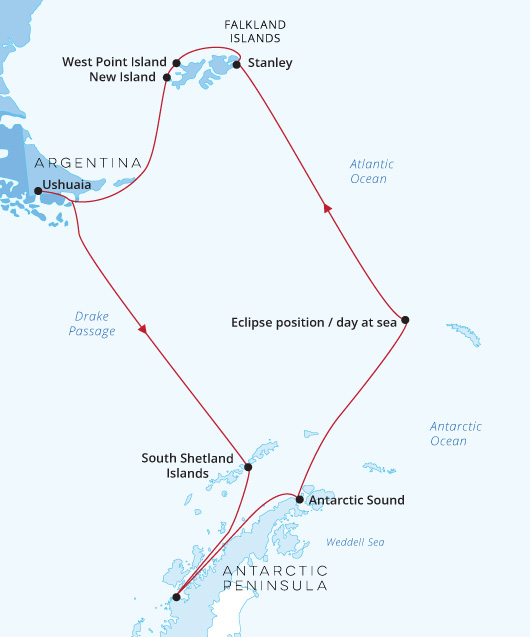
The Silver Explorer was built in Finland in 1989 and was designed specifically for navigating waters in some of the world’s most remote destinations including Antarctica, the Falkland Islands and South Georgia. The vessel was acquired by Silversea in late 2007 and has been fully refurbished in 2017 as an elegant luxury expedition cruise ship. Its ice-strengthened hull enables the ship to safely push through ice floes with ease, while a fleet of Zodiac boats allows guests to visit even the most incredible locations accompanied by the expert Expedition Team.
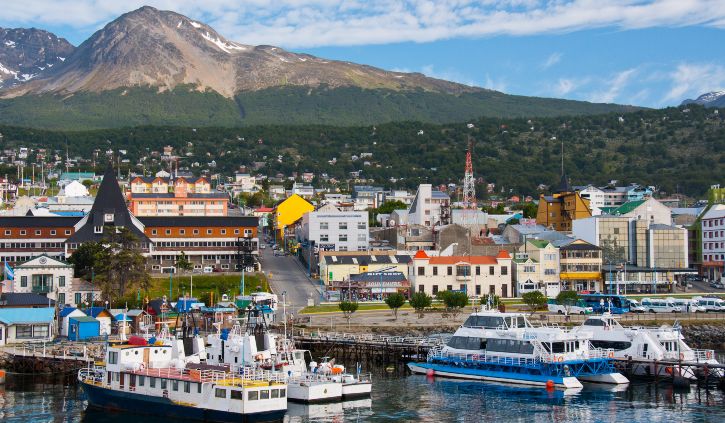
Embark on the Silver Explorer, settle in and attend a mandatory safety drill before leaving port. During the afternoon you will be introduced to some of the important crew members and along with your Expedition Team. At sail-away bid farewell to Tierra del Fuego, the ‘Land at the End of the World’.
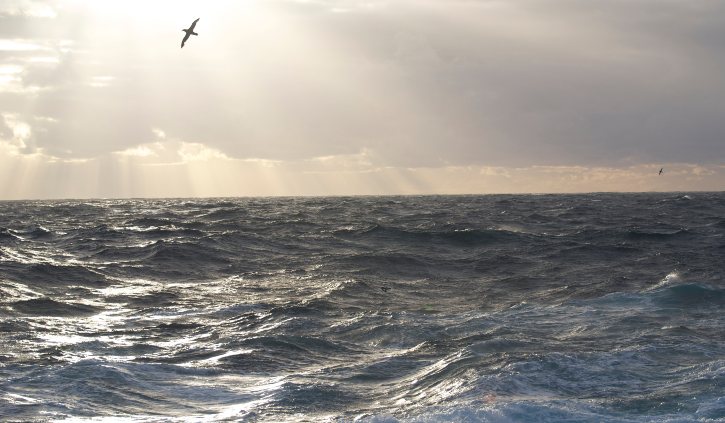
Sailing the legendary Drake Passage is an experience that few are ever lucky enough to experience. The southern tip of the Americas already feels like a wild enough environment – but the sensation of watching the distant cliffs of the peninsula known as the ‘End of the World’ fade into the horizon, is one that’s equal parts epic, eerie and magical. Set sail, to slowly drop off the bottom of the map from Cape Horn, and voyage on an expedition down into the icy underworld of Antarctica. The Drake Passage is an extraordinary voyage of romantic ocean faring legend, as you aim for Antarctica’s icy realm. On arrival, skyscraper sized icebergs salute you, as you traverse the waters of this continent where snow and ice dwelling creatures like penguins and whales roam undisturbed. Your first sight of this most-unexplored place will most likely be the South Shetland Islands. If the journey across Drake Passage sounds daunting, don’t worry – even in rough seas you’re never alone, and will often be accompanied on this spine-tingling adventure by soaring albatrosses and maybe even a protective pod of humpbacks and hourglass dolphins or two. Converging warm and cool ocean currents attract some spectacular animal life to the passage.
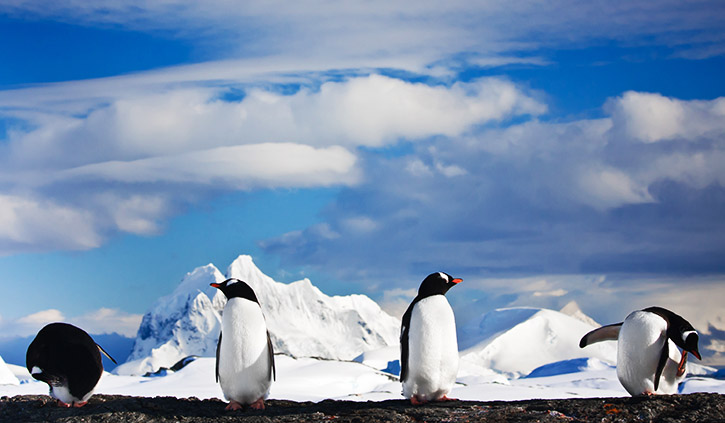
Lying close to the northwestern tip of the Antarctic Peninsula, separated by the Bransfield Strait, the South Shetland Islands fall under the jurisdiction of the Antarctic Treaty, suspending claims on their sovereignty. Several countries maintain research bases here, and with plump elephant seals, and crowds of Gentoo, Chinstrap and Adelie Penguins also calling the islands home, it can even feel a little crowded at times. King George Island is the largest and most hospitable island, hosting the majority of the research stations – some of which are populated all-year-round by tiny, hardy crews. Don’t be fooled though, these islands offer extraordinary adventure in one of the most remote locations on earth. The triple peaks of Mount Foster tower above the archipelago, and you’ll feel your heart pumping a little quicker, as you sail into the core of Deception Island’s magnificent collapsed volcano caldera. Hike the luna landscapes within, and even dip into the improbably warm, geothermally-heated waters of Pendulum Cove. Elephant Island, meanwhile, is written deep into the history of Antarctic expedition legend, as the site where Ernest Shackleton and the stricken crew of the Endurance miraculously survived a harsh Antarctic winter, in 1916.
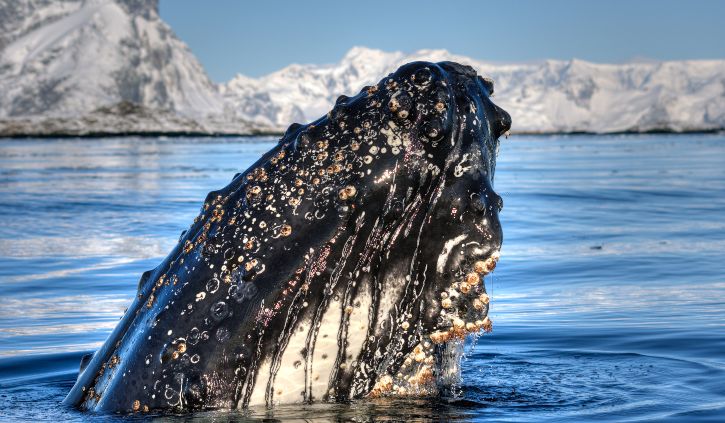
Remote and otherworldly, Antarctica is irresistible for its spectacular iceberg sculptures and calving glaciers, and for the possibility of up-close encounters with marine mammals and the iconic penguins. The Antarctic Peninsula – the main peninsula closest to South America – has a human history of almost 200 years, with explorers, sealers, whalers, and scientists who have come to work, and eventually intrepid visitors coming to enjoy this pristine and remote wilderness.
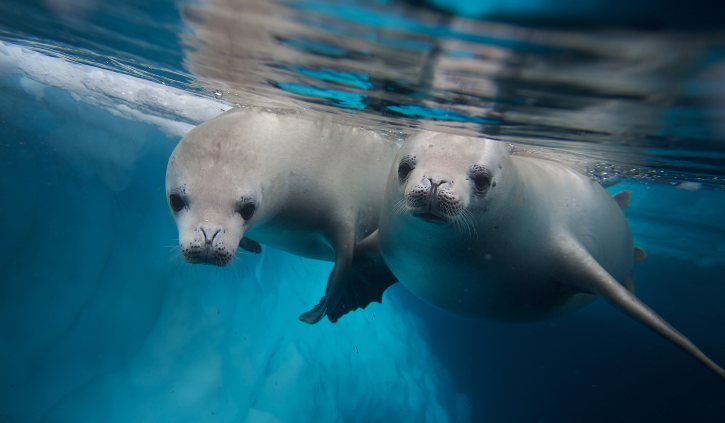
The Antarctic Sound is a stretch of water named after the first ship to have passed through this body of water from the Bransfield Strait to the Weddell Sea in 1902. The Antarctic eventually sank and crew and scientists had to spend quite some time in this area before they could be rescued. Sites that have to do with this story – like Hope Bay or Paulet Island – are sometimes visited. At Paulet, Hope Bay and Brown Bluff Adelie and Gentoo Penguins breed, as do Kelp Gulls and Cape Petrels, Snow Petrels and Skuas.
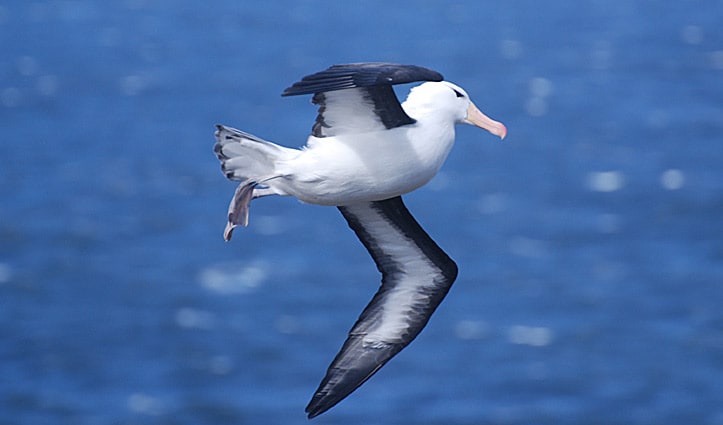
Sailing the legendary Drake Passage is an experience that few are ever lucky enough to experience. The southern tip of the Americas already feels like a wild enough environment – but the sensation of watching the distant cliffs of the peninsula known as the ‘End of the World’ fade into the horizon, is one that’s equal parts epic, eerie and magical. Set sail, to slowly drop off the bottom of the map from Cape Horn, and voyage on an expedition down into the icy underworld of Antarctica. The Drake Passage is an extraordinary voyage of romantic ocean faring legend, as you aim for Antarctica’s icy realm. On arrival, skyscraper sized icebergs salute you, as you traverse the waters of this continent where snow and ice dwelling creatures like penguins and whales roam undisturbed. Your first sight of this most-unexplored place will most likely be the South Shetland Islands. If the journey across Drake Passage sounds daunting, don’t worry – even in rough seas you’re never alone, and will often be accompanied on this spine-tingling adventure by soaring albatrosses and maybe even a protective pod of humpbacks and hourglass dolphins or two. Converging warm and cool ocean currents attract some spectacular animal life to the passage.
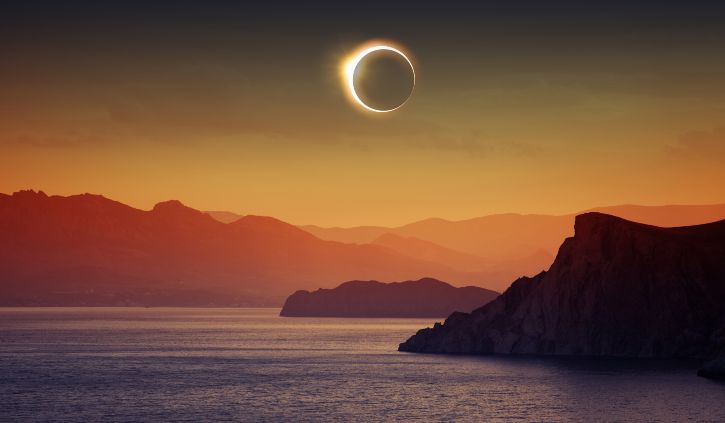
Calling all skywatchers, umbraphiles and astronomers! Extremely rare and very exciting, a full solar eclipse is a bucket list experience if ever there was one. Scheduled for 4th December, 2021 the next eclipse will take place only in Antarctica and you will be positioned in the small path of totality for maximum effect. This experience is not available for the average cruisers; imagine being surrounded by brilliant light one minute, then complete blackout the next, before enjoying the mysterious shadow-play as you wind back to the blinding white of Antarctica. Watch how the curious wildlife will react to the eclipse, making sure to note their behaviour and let the onboard naturalist know. Other onboard expedition staff will share their insightful knowledge in order to help you gain a better understanding of this incredible phenomenon. As if a trip to the seventh continent was not special enough!

Days at sea are the perfect opportunity to relax, unwind and catch up with what you’ve been meaning to do. So whether that is going to the gym, visiting the spa, whale watching, catching up on your reading or simply topping up your tan, these blue sea days are the perfect balance to busy days spent exploring shore side.
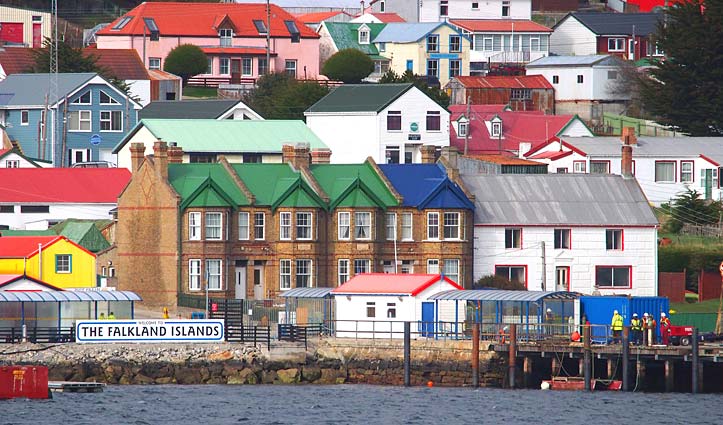
A true haven for wonderful, diverse wildlife watching, Stanley invites you ashore to soak in the untouched beauty of the Falkland Islands. Rolling farms and animal-covered coves and cliffs unravel nearby, while reminders of the war that scarred these islands in 1982 also reveal themselves on closer inspection. The Falkland Islands – a tiny, southerly outpost of the United Kingdom – lie a long way from the nearest land at Patagonia, and their isolated location has helped to maintain this unblemished, unhurried world of wonderful animals and wind-whipped scenery. The ghostly, rusting wreck of the Lady Elizabeth ship welcomes you into port – and is a reminder of the historically treacherous nature of these 740 islands’ remote location. Stanley sits as the capital, and even here there’s a quiet village ambience, as you wander quaint streets below colourful roofs. The small cathedral has an unusual decoration outside – a dramatic archway constructed from the giant jawbones of a blue whale. While Stanley oozes quiet appeal, you’ll quickly want to head out into the ‘Camp’ – the local word for practically any part of the Falklands except for Stanley. Home to thousands of Gentoo and Magellanic penguins, you can meet their larger siblings – the tuxedo-clad king penguins, who rest on the shores. With five varieties of penguins living here, or dropping in during migrations, it’s one of the best places in the world to see the flightless birds squawking and waddling adorably. Cape Dolphin is the perfect position to spot exciting marine mammals cruising offshore, and you’re just as likely to bump into the island’s penguin and elephant seal populations here too. With varied birdlife filling its skies and sweeping over the waves, the scale and diversity of animals close to Stanley makes for a truly awe-inspiring visit.
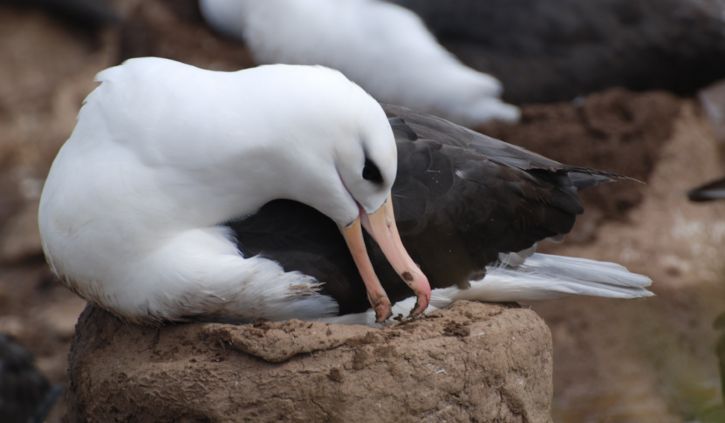
Located slightly northwest of West Falkland, West Point Island is used for sheep farming and nature observations. Peale’s dolphins and Commerson’s dolphins with their distinctive black and white markings can often be spotted as one approaches West Point Island. Our Zodiacs will take us to a jetty from where we will walk slightly less than 2 miles to Devil’s Nose. Walking across rolling moorland and past gorse we will be observed by Grass Wrens, Long-tailed Meadowlarks, Falkland Thrushes, Striated Caracaras and Turkey Vultures, but our goal is to reach colonies of Black-browed Albatross that nest side-by-side with Rockhopper Penguins. Magellanic Penguins and Magellanic Cormorants can also be found on the island.
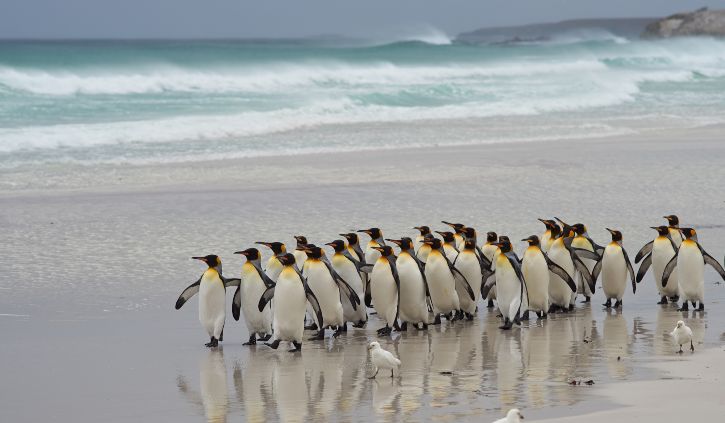
Remote and raw, New Island lies to the west of the Falkland Islands, and the humble human population here is far outweighed by the extraordinary birdlife that resides along its craggy coastline. Out in the tempestuous wilds of the South Atlantic Ocean, the island is a sanctuary of animal life – with crowds of rockhopper penguins, wrinkled seals and stern-looking albatross among its many residents. The penguins of the Falklands are a sight to see, fooling and falling on the beaches, before diving in and whipping through the waters. Home to five different species, including king penguins – who strut with their orange collars glowing against the pure white feathers of their chests. Sea lions, seals and elephant seals bark and lumber along the shoreline, while sleek orcas patrol and Peale’s dolphins cut through the waves.
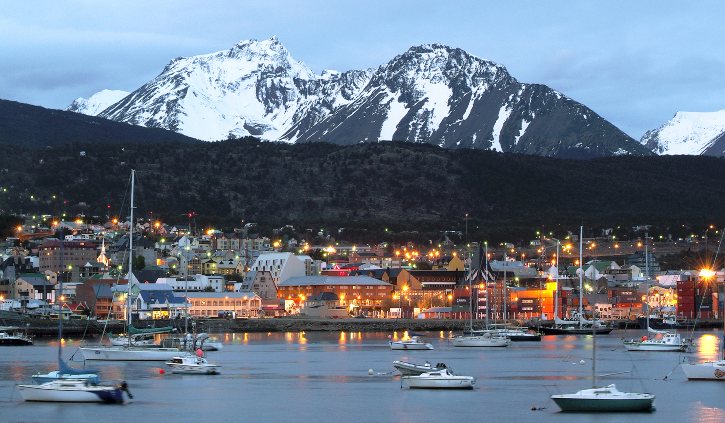
Silver Explorer will arrive at Ushuaia in the evening of day 13. Following breakfast on day 14, disembark Silver Explorer. Expedition highlights and wildlife listed here are possible experiences only and cannot be guaranteed. Your Expedition Leader and Captain will work together to ensure opportunities for adventure and exploration are the best possible, taking into account the prevailing weather, wildlife activity and ice conditions. Expedition Team members scheduled for this voyage are subject to change or cancellation.
A flexible itinerary allows us to take advantage of favourable sea and weather conditions. In the true spirit of expedition cruising, each day the Expedition Leader and Captain will determine our best course depending on weather, ice conditions and wildlife we may encounter.